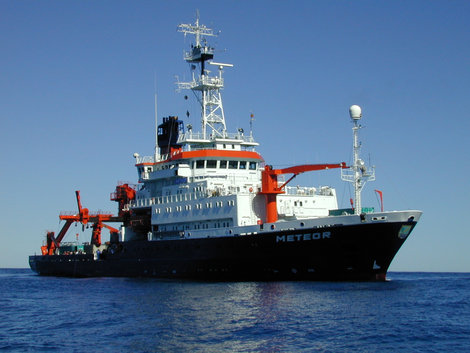- Home
- Research
- Expeditions
- 2015
- M114
R/V METEOR M114: 12.2. - 28.3.2015
Natural hydrocarbon seepage in the southern Gulf of Mexico: Quantification of emissions and fate of hydrocarbons
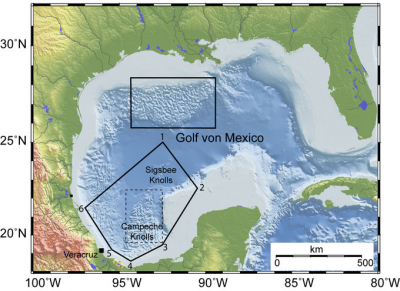
Figure showing the outline of the proposed working area including the Campeche Knolls and the Sigsbee Knolls in the southern Gulf of Mexico. The scientific work will concentrate on those seafloor knolls and ridges that show signs of oil seepage located in the stippled box. In order to comparatively study hydrocarbon emissions research is also planned at the continental margin off the USA.
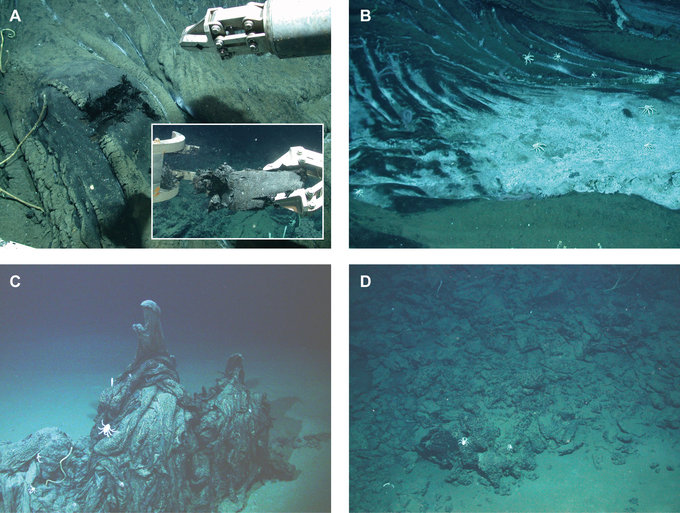
Seafloor images by ROV MARUM-Quest 4000m: (A) Chewy asphalts taken by manipulator, (B) galatheid crabs feeding on microbial mat, (C) heavy oil flows, (D) fragmented, altered asphalt.
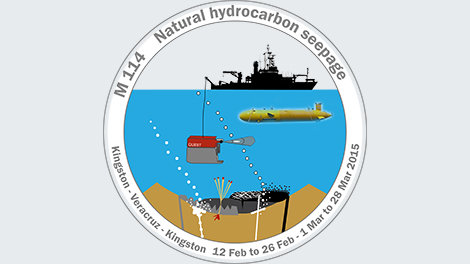
LEG 1: 12.02. - 26.02.2015
Veracruz - Kingston
Chief scientist:
Dr. Heiko Sahling
LEG 2: 01.03. - 28.03.2015
Kingston - Veracruz
Chief scientist:
Prof. Dr. Gerhard Bohrmann
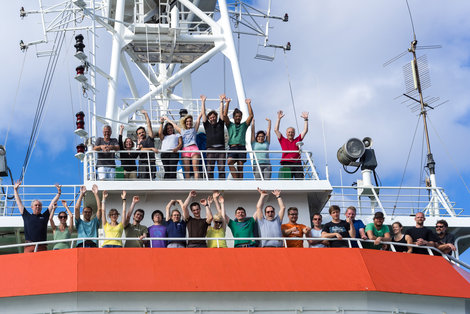
Participants of cruise M114-2.
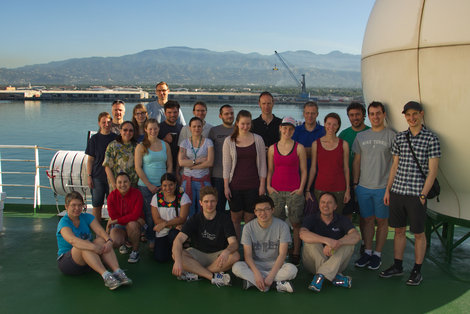
Participants of cruise M114-1.
DFG Science TV "Blue Wonder"
MARUM TV "The Secret of Underwater Asphalt"



